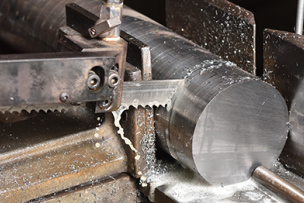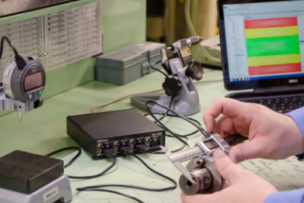In the 1980s the concept of data collection for process control took a major leap forward. This was about the time that a combination of electronic technology and economics allowed gaging to become digital. With a digital signal available, it became possible to transfer information via cable directly from a gage or digital indicator to the data collector.
Electronic data collection also spurred a major improvement in data quality. Prior to this advancement, data was handwritten onto a sheet of paper and then logged into a computer, or it was logged into the computer directly at the point of gaging. Errors were virtually eliminated by having data transferred directly to the data analysis software. When electronic data collection strategies were first implemented, collection efficiencies and error reduction improved dramatically over manual collection methods.
In recent years, checking parts at a gaging station with a hand tool or a dedicated fixture gage connected to a computer via a cable for data collection was the norm. Many hand tools and digital indicators had data output built in, and collecting data was easy and highly cost effective. It was also inexpensive, fast, reliable, and provided a great solution for many process and quality control applications.
However, that methodology wasn’t as helpful when the part couldn’t be brought to the bench. Running a long cable from the gage to the computer was troublesome, and if multiple dimensions needed to be checked with different gaging, a collection of long cables quickly became a hazardous, snarled mess.




Talk to Us!
Leave a reply
Your email address will not be published. Required fields are marked *